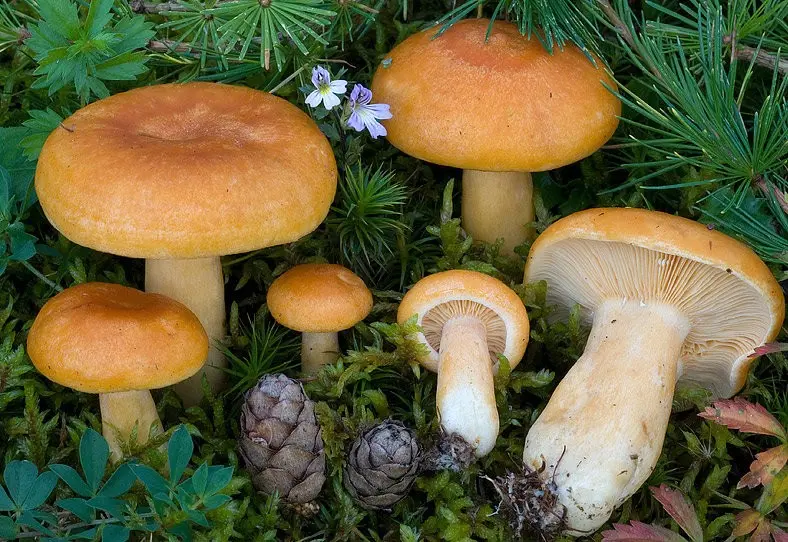Contents
Milky orange (Lactarius porninsis)
- Division: Basidiomycota (Basidiomycetes)
- Subdivision: Agaricomycotina (Agaricomycetes)
- Class: Agaricomycetes (Agaricomycetes)
- Subclass: Incertae sedis (of uncertain position)
- Order: Russulales (Russulovye)
- Family: Russulaceae (Russula)
- Genus: Lactarius (Milky)
- Type: Lactarius porninsis (Orange milkweed)

Milky orange (Lactarius porninsis) is a fungus of the Russula family, belonging to the genus Milky. The main synonym of the name is the Latin term Lactifluus porninae.
External description of the fungus
The fruiting body of the orange lactiferous consists of a stem 3-6 cm high and 0.8-1.5 cm in diameter and a cap 3-8 cm in diameter.
Also, the fungus has a lamellar hymenophore under the cap, consisting of not wide and often located plates, slightly descending down the cylindrical and narrowed at the base leg. The plates are elements in which yellow spores are preserved.
The cap of the mushroom is initially characterized by a convex shape, later becomes depressed, and even funnel-shaped. Covered with orange skin, characterized by a smooth surface, which becomes sticky and slippery in high humidity.
The leg is initially solid, has the same color as the hat, but sometimes it is a little lighter. In mature mushrooms, the stem becomes hollow. The milky juice of the fungus is characterized by strong density, causticity, stickiness and white color. When exposed to air, milky juice does not change its shade. Mushroom pulp is characterized by a fibrous structure and high density, has a slightly pronounced smell of orange peels.
Habitat and fruiting period
Milky orange (Lactarius porninsis) grows in deciduous forests in small groups or singly. Active fruiting of the fungus occurs in summer and autumn. The fungus of this species forms mycorrhiza with deciduous trees.
Edibility
The orange milky (Lactarius porninsis) is an inedible mushroom, and some mycologists classify it as a mildly poisonous mushroom. It does not pose a particular danger to human health, but the consequences of its use in food are often disorders of the gastrointestinal tract.
Similar species, distinctive features from them
The fungus of the described species does not have similar species, and its main distinguishing feature is the citrus (orange) aroma of the pulp.









